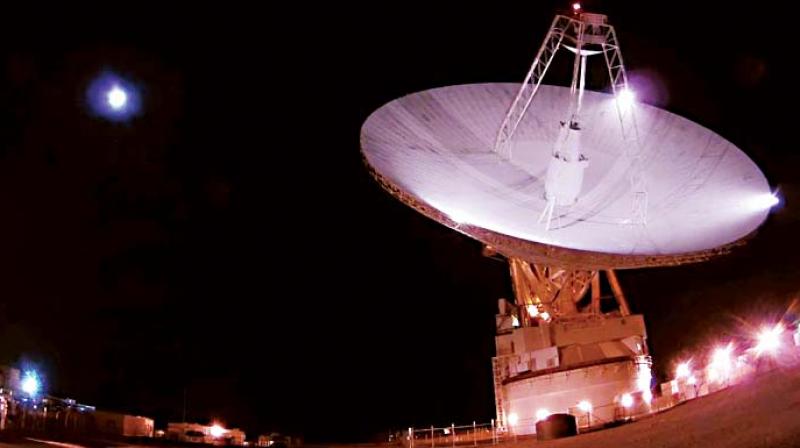Chandrayaan, lost & found after 8 years!

Bengaluru: With the discovery of water on Moon in mid 2009, Chandrayaan-I made headlines the world over! But less than a month later, Indian space scientists had lost all contact with the country’s first lunar probe.
Until Friday, when eight years later, radar scientists of NASA (National Aeronautics and Space Administration), US brought cheer to everyone at Indian Space Research Organisation (ISRO) when Chandr-ayaan-1 was spotted, orbiting the earth’s nearest astral neighbour, exactly where scientists had lost track of it.
The spacecraft, which was located by scientists at NASA’s Jet Propulsion Laboratory (JPL) with the help of a powerful ground-based radar, cannot be revived however, given its glitch-hit power system.
Plagued by problems in power supply units controlling both onboard computers, it forced Indian space scientists to move it away from the lunar surface in order to avoid excess heat and radiation, in 2009.
“We found that DC-DC converters manufactured by MDI Power, USA, did not meet the specifications resulting in the snag in power supply system. There's nothing much we can do now without any power onboard as Chandrayaan-I can neither receive signals nor send data,” Prof U R Rao, former chairman of ISRO, who headed a committee which probed the failed mission, told DC.
Though Prof Rao and his colleagues anticipated the spacecraft to drift and crash into lunar surface a couple of years after losing contact, the latest discovery points to the fact that Chandrayaan-I has remained at an orbit 200 km from lunar surface from the time the glitch wrought a premature end to the mission.
“There’s not much atmosphere over the Moon, almost as good as vacuum, so the spacecraft has not lost energy due to friction, and so continues in the same orbit. Our first satellite, Aryabhata, lasted about 15 years in space,” said Prof Rao.
NASA’s Moon Mineralogy Mapper, one of the 11 instruments onboard Chandrayaan-I, and ISRO's Moon Impact Probe (MIP), discovered water on the lunar surface.
Scientists at NASA's Jet Propulsion Laboratory said it required “more detective work” to find Chandrayaan-I after they spotted NASA's Lunar Reconnaissance Orbiter (LRO).
“Finding India's Chandrayaan-1 required a bit more detective work because the last contact with the spacecraft was in August 2009,” said Marina Brozovic, a radar scientist at JPL and principal investigator for the test project.
Although the interplanetary radar has been used to observe small asteroids several million miles from Earth, researchers were not certain that an object of this smaller size as far away as the Moon could be detected, even with the world's most powerful radars.
Chandrayaan-I proved the perfect target for demonstrating the capability of this technique. To find a spacecraft 3, 80,000 km away, JPL's team used NASA’s 70-metre antenna at NASA's Goldstone Deep Space Communications Complex in California to send out a powerful beam of microwaves directed towards the Moon.
Then the radar echoes bounced back from lunar orbit were received by the 100-metre Green Bank Telescope in West Virginia. Finding a derelict spacecraft at lunar distance that has not been tracked for years is tricky because the Moon is riddled with mascons (regions with higher-than-average gravitational pull) that can dramatically affect a spacecraft's orbit over time, and even cause it to have crashed into the Moon.
JPL's orbital calculations indicated that Chandrayaan I is still circling some 200 km above the lunar surface, but it was generally considered “lost”. However, with Chandrayaan-I, the radar team utilised the fact that this spacecraft is in polar orbit around the Moon, so it would always cross above the lunar poles on each orbit, and got a confirmation as well.

